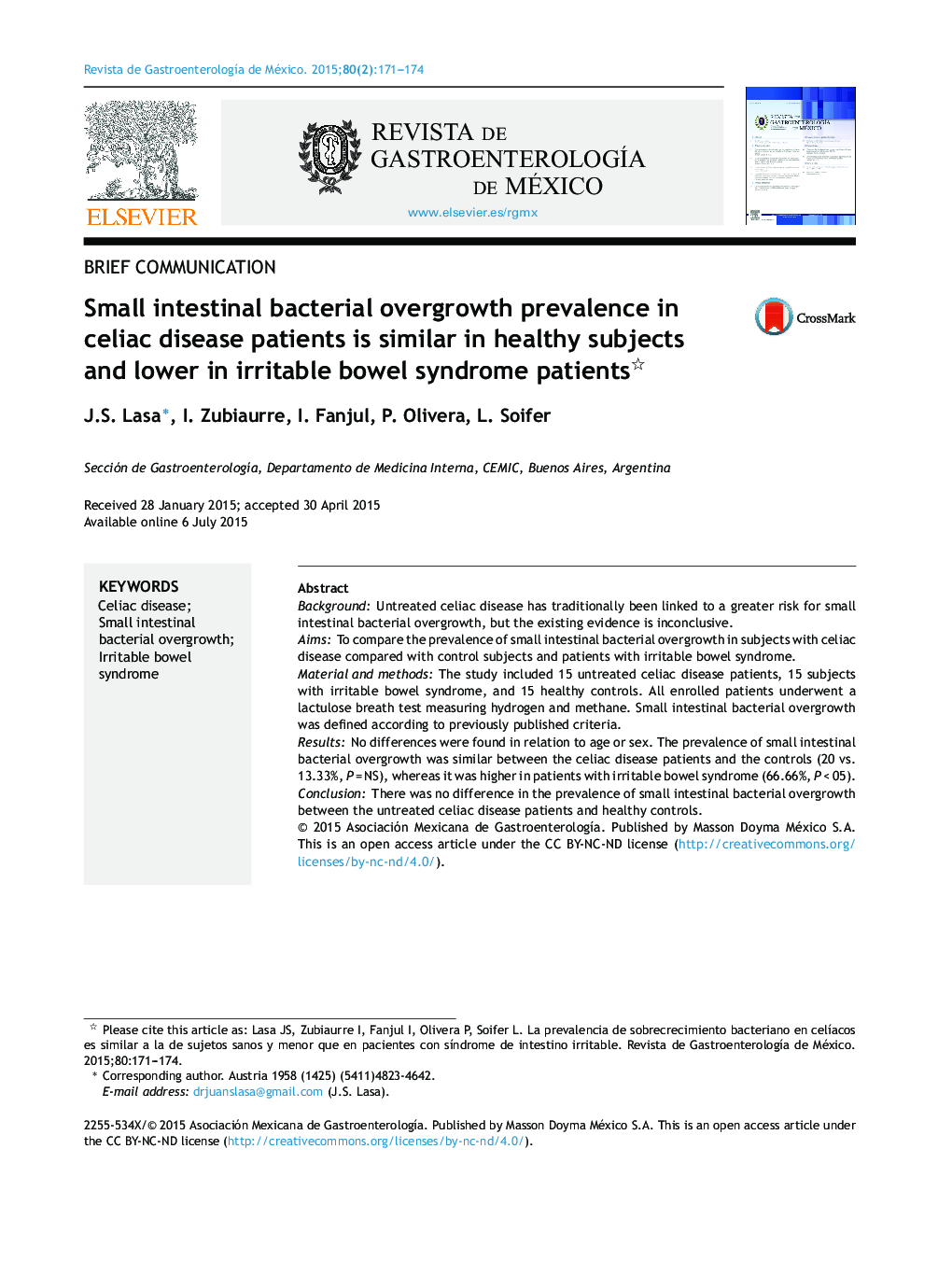| Article ID | Journal | Published Year | Pages | File Type |
|---|---|---|---|---|
| 3319087 | Revista de Gastroenterología de México (English Edition) | 2015 | 4 Pages |
BackgroundUntreated celiac disease has traditionally been linked to a greater risk for small intestinal bacterial overgrowth, but the existing evidence is inconclusive.AimsTo compare the prevalence of small intestinal bacterial overgrowth in subjects with celiac disease compared with control subjects and patients with irritable bowel syndrome.Material and methodsThe study included 15 untreated celiac disease patients, 15 subjects with irritable bowel syndrome, and 15 healthy controls. All enrolled patients underwent a lactulose breath test measuring hydrogen and methane. Small intestinal bacterial overgrowth was defined according to previously published criteria.ResultsNo differences were found in relation to age or sex. The prevalence of small intestinal bacterial overgrowth was similar between the celiac disease patients and the controls (20 vs. 13.33%, P = NS), whereas it was higher in patients with irritable bowel syndrome (66.66%, P < 05).ConclusionThere was no difference in the prevalence of small intestinal bacterial overgrowth between the untreated celiac disease patients and healthy controls.
ResumenIntroducciónClásicamente, se ha vinculado a la enfermedad celíaca no tratada con un mayor riesgo de sobrecrecimiento bacteriano. Sin embargo, la evidencia existente no es concluyente.ObjetivoComparar la prevalencia de sobrecrecimiento bacteriano en sujetos celíacos con respecto a sujetos controles y a pacientes con síndrome de intestino irritable.Material y métodoFueron inscritos 15 pacientes celíacos no tratados, 15 sujetos con síndrome de intestino irritable y 15 sujetos controles sanos. Los pacientes inscritos realizaron un test de hidrógeno/metano en aire espirado con lactulosa. Se definió al sobrecrecimiento bacteriano según criterios previamente publicados.ResultadosNo se encontraron diferencias en cuanto a edad y sexo. La prevalencia de sobrecrecimiento bacteriano fue similar entre celíacos y controles (20 vs. 13.33%, p = NS), mientras que fue mayor en pacientes con síndrome de intestino irritable (66.66%, p < 0.05).ConclusiónLos celíacos no tratados presentan una prevalencia de sobrecrecimiento bacteriano no diferente a los sujetos sanos.
